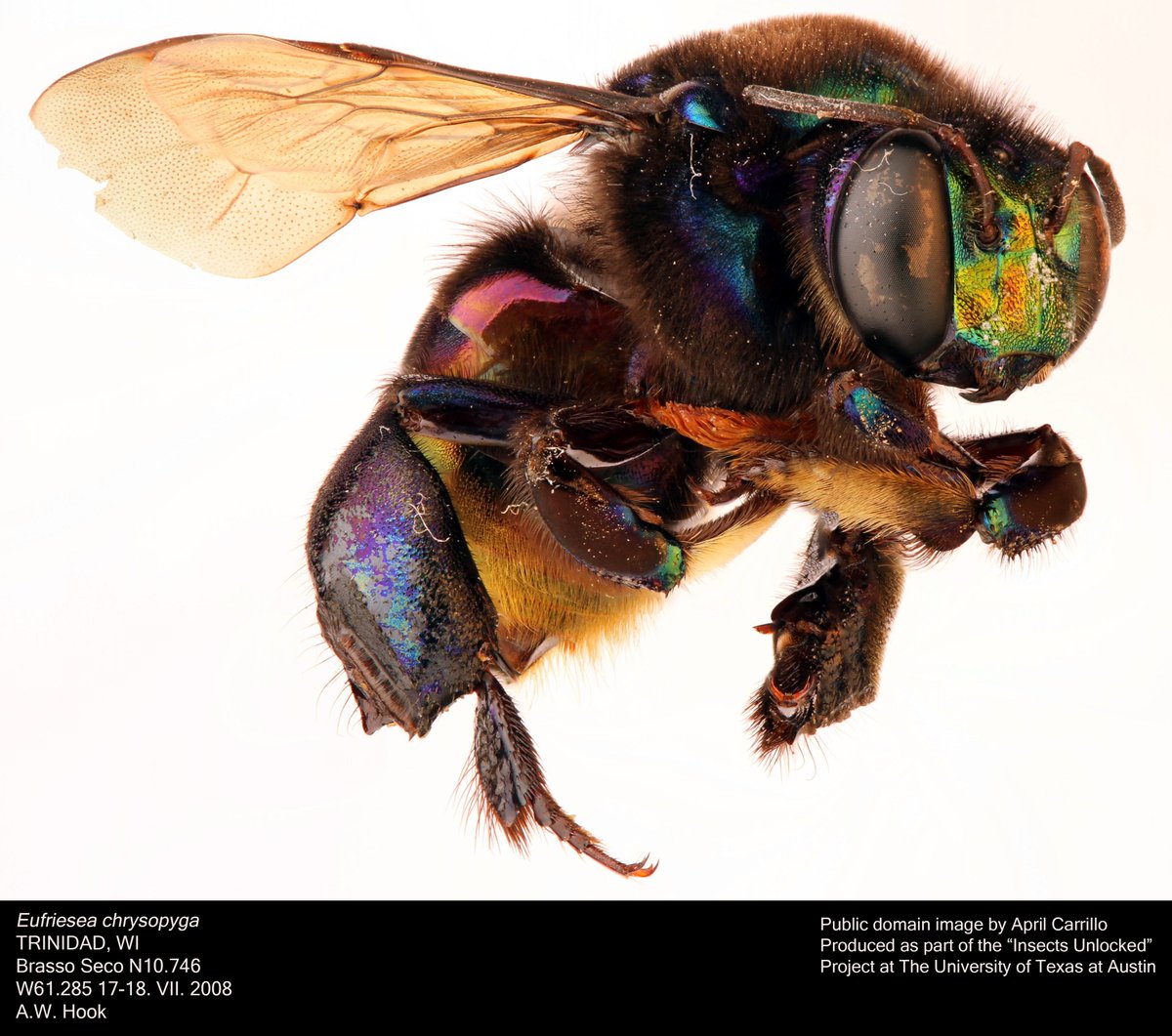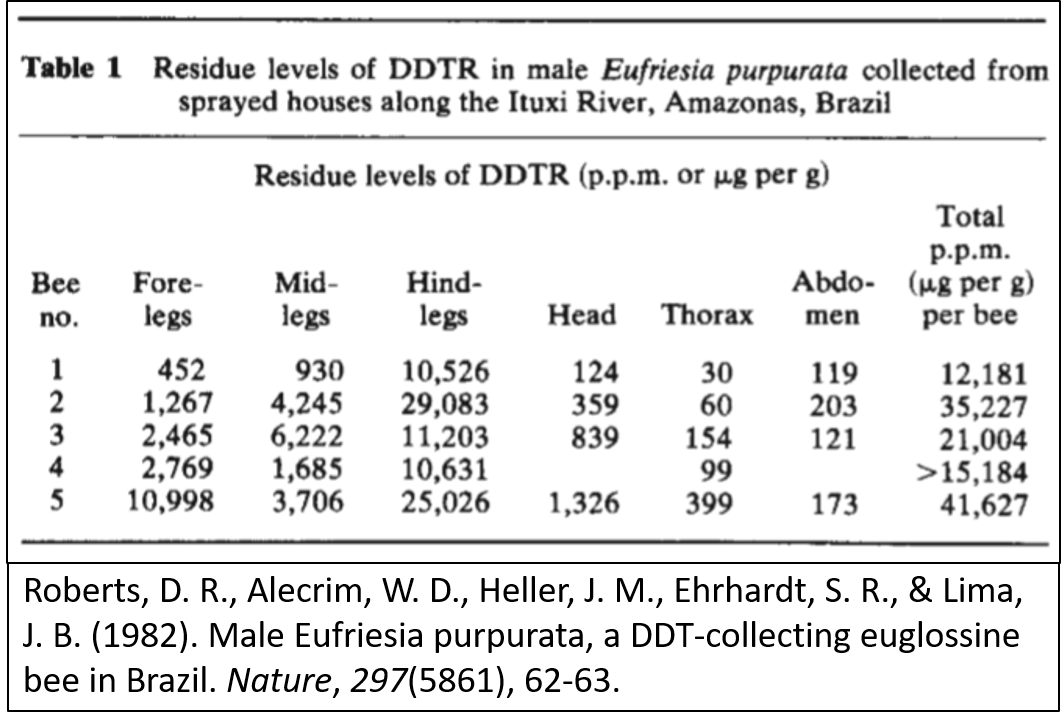DDT is an incredibly potent and environmentally damaging insecticide, banned in the US since 1972, but is still used in mosquito control.
In 1979, the small Brazillian town of Floresta, after receiving DDT treatments, began seeing a new household pest.
Bees.
#DeepDive
In 1979, the small Brazillian town of Floresta, after receiving DDT treatments, began seeing a new household pest.
Bees.
#DeepDive
Before these treatments, the residents had never noticed these bees and had never been bothered by them...but now there were seeing hundreds every day in their homes.
They were ID& #39;d as Eufriesia purpurata, a species of Orchid bee closely related to the one in the first post.
They were ID& #39;d as Eufriesia purpurata, a species of Orchid bee closely related to the one in the first post.
The village of Floresta was very remote, about a 18 hour boat ride from the nearest town.
It was also a very poor community of subsistence farmers. No other pesticides, or even household chemicals were used. DDT was the only thing they had access to, b/c mosquito control.
It was also a very poor community of subsistence farmers. No other pesticides, or even household chemicals were used. DDT was the only thing they had access to, b/c mosquito control.
To see whether the bees were actually attracted to the DDT, they treated boards with DDT, talc, and the stuff they used to dissolve the DDT and talc in and hung them from a tree.
The bees were attracted only to the DDT boards
So they moved the boards at random times
Still bees
The bees were attracted only to the DDT boards
So they moved the boards at random times
Still bees
So...then they got curious as to whether the bees were grabbing the poison, flying off and dying.
So they marked the bees to see if it was the same bees.
Next day, a good chunk of the bees they had marked the previous day had returned for more DDT.
The bees weren& #39;t dying.
So they marked the bees to see if it was the same bees.
Next day, a good chunk of the bees they had marked the previous day had returned for more DDT.
The bees weren& #39;t dying.
So...next question.
How much DDT were these bees grabbing?
Answer: A lot.
On average, each individual Eufriesia was carrying enough DDT to kill about 2,000 honeybees.
Or, for the toxocologists in the house, 4,000 times the honeybee contact LD50.
How much DDT were these bees grabbing?
Answer: A lot.
On average, each individual Eufriesia was carrying enough DDT to kill about 2,000 honeybees.
Or, for the toxocologists in the house, 4,000 times the honeybee contact LD50.
So, this is insane.
...and nobody touched it for 30 years.
The next paper published on this was in 2007, and frankly, it didn& #39;t say much.
...and nobody touched it for 30 years.
The next paper published on this was in 2007, and frankly, it didn& #39;t say much.
The paper was a gas chromatography paper, looking for potential metabolites of DDT in the bees.
They found some of the standard breakdown products of DDT...but also some seemingly unknown carbon/chlorine compounds.
...but they weren& #39;t able to positively ID them.
They found some of the standard breakdown products of DDT...but also some seemingly unknown carbon/chlorine compounds.
...but they weren& #39;t able to positively ID them.

 Read on Twitter
Read on Twitter



